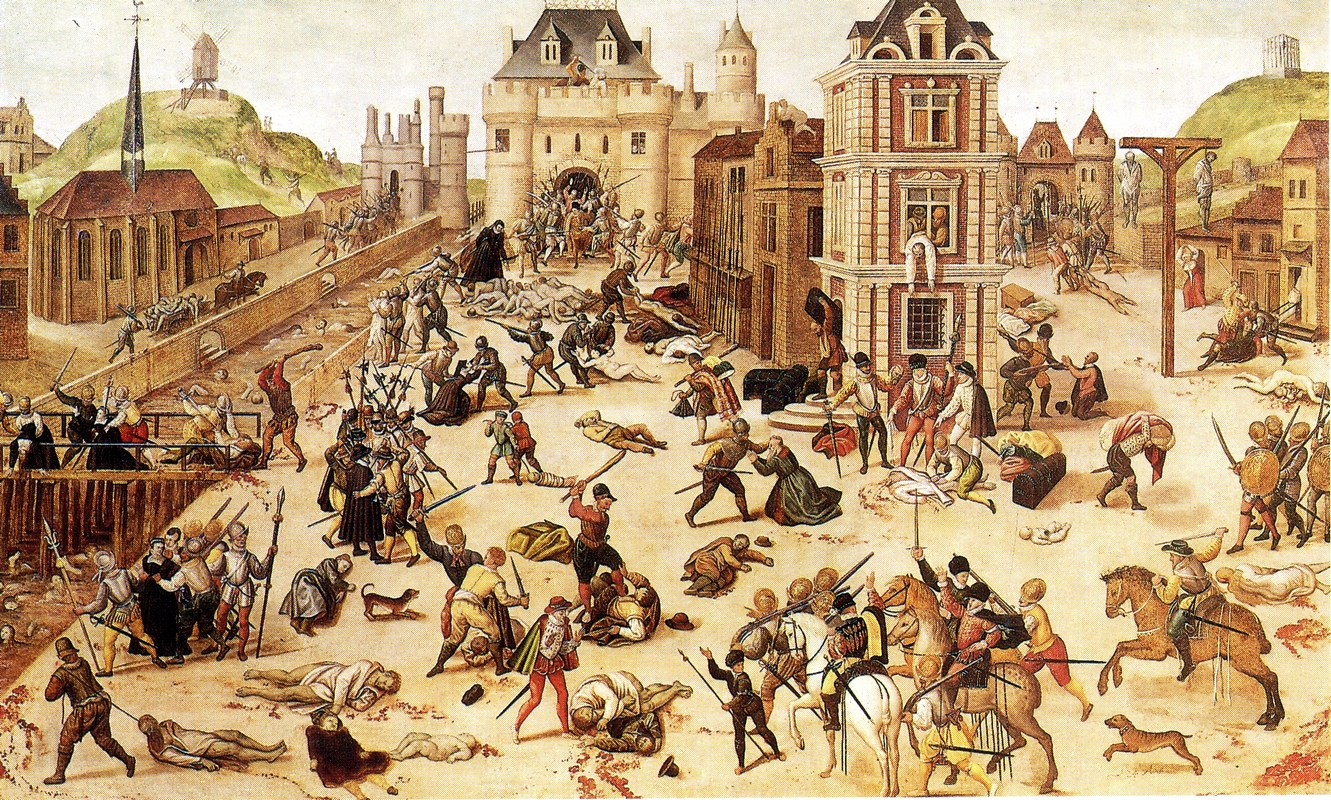
The Edict of Nantes
The Edict of Nantes was a promise of religious toleration. It was granted in 1598 to the French Protestants known as Huguenots after years of civil wars. The Calvinist Huguenots came into being around 1550 when preachers brought Bibles to France from Switzerland. The growth of this reform movement in Gallic lands was astonishingly rapid. Within five years the new church held its first synod. Within a century it boasted a million and a half adherents.
Religious Reformation
Is it possible for a nation to remain peaceful and united with more than one variation of Christianity in the country? To many in the sixteenth century, the answer was a resounding NO. There had been one church throughout the middle ages, and the toleration of any other religion seemed unthinkable. Both before and after the Reformation, a war had followed the rise of sects. As the ideas of the Protestant Reformation spread throughout Europe, governments, as well as the church, were affected as each adopted one form or another of faith. Most government leaders believed that allowing more than one sect would threaten the unity of a country.
This was the situation in sixteenth-century France. For over sixty years the country had tried to find a political solution to the country's religious divisions. Persecutions, wars, and massacres disrupted the country as Catholics tried to maintain their majority faith while the Huguenots (as French Protestants were called) attempted to worship freely and even to seize power.
A Red Wedding

In 1572, backed by the king, Catholic forces used the royal wedding of the Huguenot Henry of Navarre--in line for the throne--as a pretext to rid the city of the Protestants that they detested. During the St. Bartholomew's Day Massacre that resulted, 10,000 or more Protestants were butchered in Paris and similar massacres followed throughout the provinces. The pope had a medal stamped to honor the atrocity.
France's internal wars intensified after the Massacre; kings were assassinated, and finally, Henry of Navarre himself succeeded to the throne. The Catholics of France, who were in the majority, absolutely refused to be ruled by a Huguenot. In order to bring peace to France, Henry adopted the Catholic faith. "Paris is worth a mass," he is reported to have said.
Henry Issues Edict of Nantes
He did not forget his Huguenot roots, however. On this date, April 13, 1598, Henry issued the Edict of Nantes, legally recognizing the Protestants. Huguenots were allowed to worship privately anywhere in France and were allowed public worship in specific places. In many ways the edict was unworkable, for it allowed the Huguenots political and military control of parts of the country, making them almost a nation within a nation. The Huguenots also gained complete civil liberties. Under the Edict of Nantes, the Protestants enjoyed religious freedom and prospered in France for a time. However, piece by piece the Catholic majority chipped away at the agreement's promises until finally, over eighty years later, King Louis XIV revoked the Edict altogether, again trying to establish one religion for his country.
Even after it was revoked, the Edict of Nantes remained an important memorial to freedom of conscience and religious liberty.
Portions of this article were adapted from Huguenots: History and Massacre from Christianity.com
Bibliography:
- Adapted from an earlier Christian History Institute story.
Last updated June, 2007

_639003522088907085.jpg)
